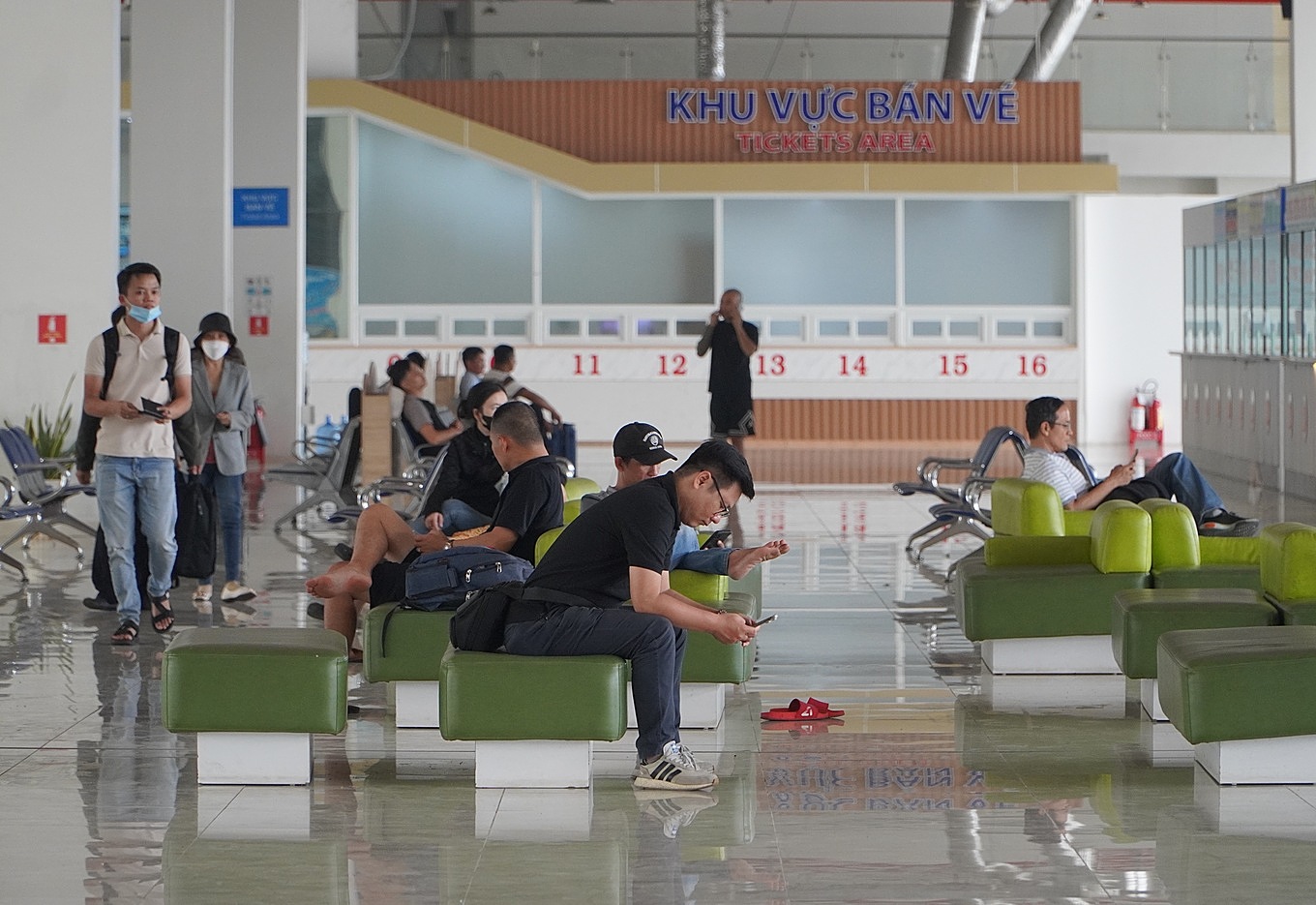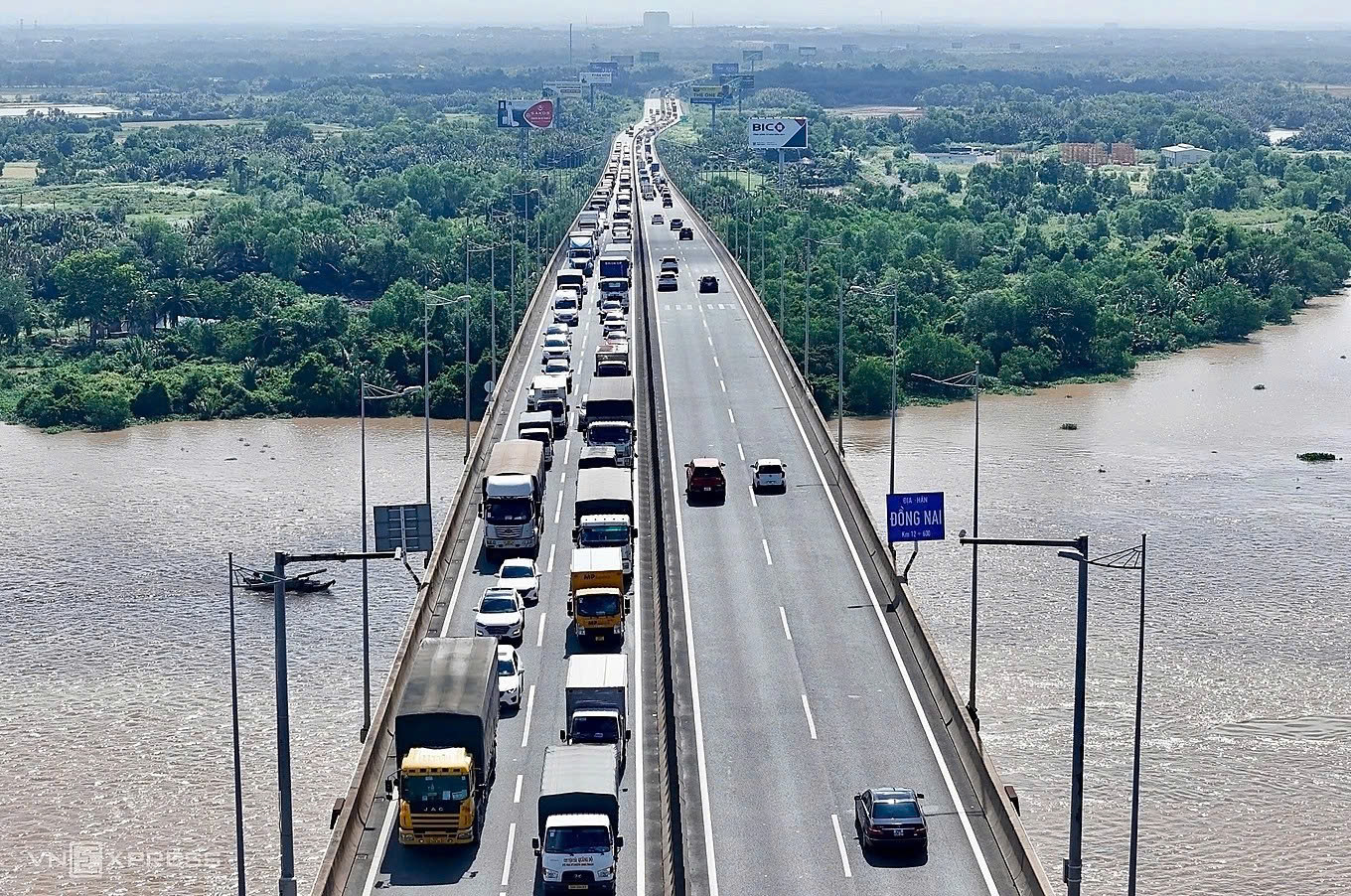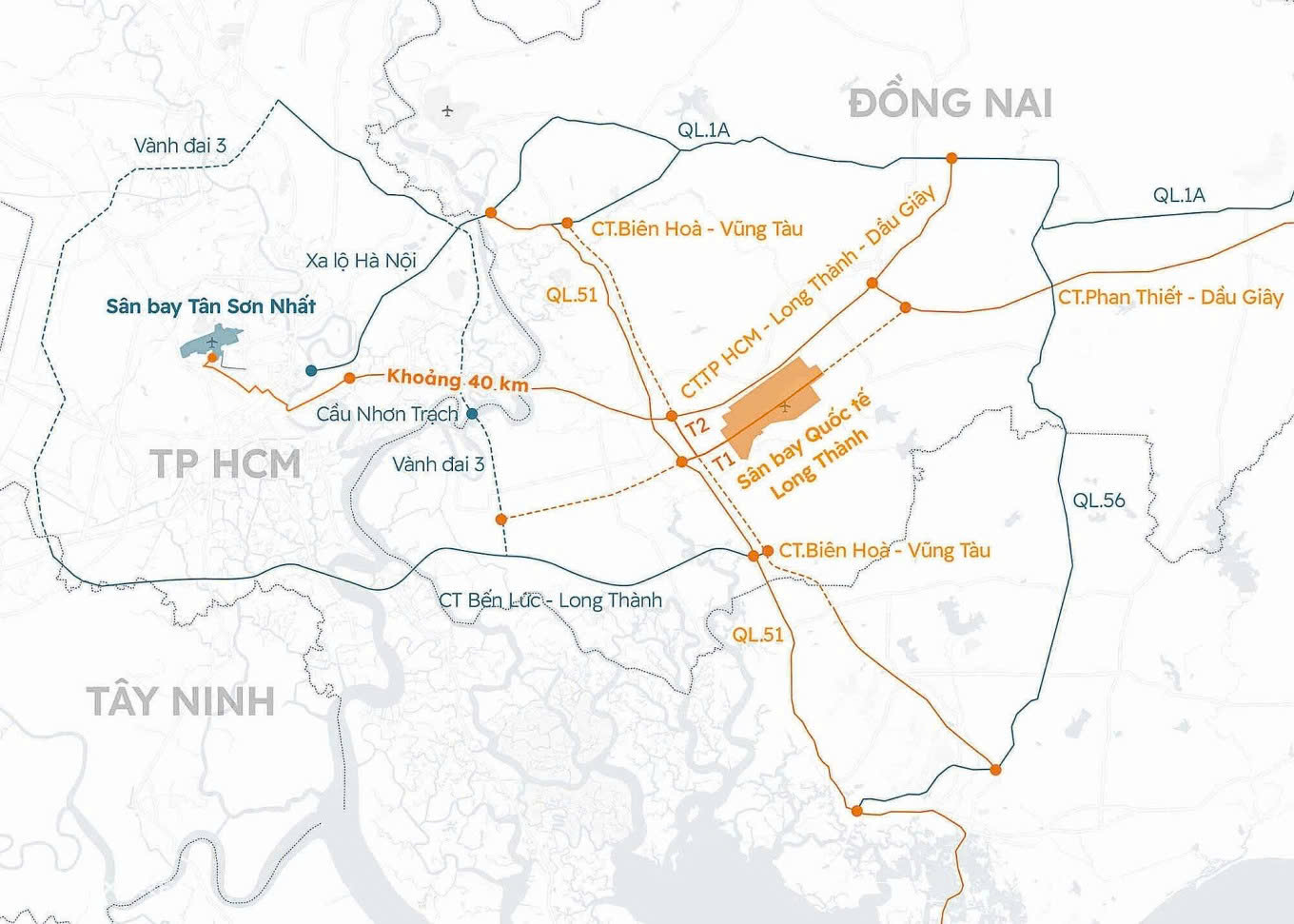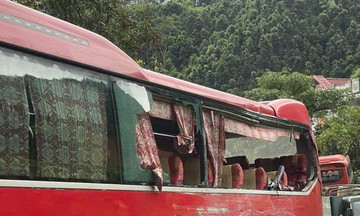The Mien Dong bus station has operated in Ho Chi Minh City since before 1975, originally located on Le Hong Phong street. In 1981, it moved to its current location. For years, it was the city's largest and busiest bus station, especially during weekends and holidays. However, its location in the inner city caused frequent congestion and severe traffic jams.
To alleviate traffic and pollution, Ho Chi Minh City decided in 2016 to build a new bus station in the suburbs. The new Mien Dong bus station, built on a 16-hectare site in former District 9 with a total investment of 4,000 billion VND, has a capacity of over 7 million passengers annually, or 21,000 passengers daily, making it the largest inter-provincial bus station in the country.
 |
Passengers at the new Mien Dong bus station, 1/1/2025. Photo: Giang Anh |
Passengers at the new Mien Dong bus station, 1/1/2025. Photo: Giang Anh
After 4 years of construction, the first phase was completed in 10/2020 with a total investment of over 773 billion VND. It was expected to transform passenger transport in Ho Chi Minh City and relieve pressure on the old station. However, the new station has been plagued by low passenger numbers. One of the main reasons is its location about 15 km from the city center, with inconvenient transport links making it difficult for passengers to access. Due to the low passenger numbers, many bus companies have moved to other locations.
After 5 years of operation, the new Mien Dong bus station has yet to reach 10% capacity. Currently, the station sees an average of 6,400 passengers and 375 bus trips daily, despite most long-distance routes from Ho Chi Minh City to central and northern Vietnam having been relocated there.
Representatives of the new Mien Dong bus station said that the opening of the Ben Thanh - Suoi Tien metro line in late 2024, combined with the bus network, has slightly increased passenger numbers, but not significantly. In addition to limited connectivity, unauthorized bus services operating outside the station also make it difficult for the station to compete.
The project's initial goal was to create a major transport hub in Ho Chi Minh City, connected to the national transport network and oriented towards transit-oriented development. However, transport links to the station remain incomplete. Major projects like the expansion of Hanoi Highway and National Highway 1 have been delayed. The overpass and underpass directly connecting to the station have also stalled. Hoang Huu Nam street and many surrounding routes remain unfinished, hindering access to the station.
 |
The passenger terminal of Long Thanh airport is nearing completion of its roofing, 8/2025. Photo: Phuoc Tuan |
The passenger terminal of Long Thanh airport is nearing completion of its roofing, 8/2025. Photo: Phuoc Tuan
The situation of the new Mien Dong bus station has been compared by many experts to Long Thanh airport, currently the largest aviation infrastructure project in Vietnam.
Long Thanh airport is being built in Dong Nai province on an area of over 5,000 hectares, with a total investment of nearly 336,630 billion VND. Upon completion of all three phases, it will have a capacity of 100 million passengers and 5 million tons of cargo annually. The first phase, scheduled to open in 2026, is expected to handle 25 million passengers and 1.2 million tons of cargo annually.
The airport is expected to become an international transit hub, relieving Tan Son Nhat airport, which has been operating over its design capacity of 25 million passengers per year for many years, causing frequent traffic jams. However, Long Thanh still lacks a comprehensive transport network.
Le Trung Tinh, Chairman of the Ho Chi Minh City Passenger Transport Association, warned of potential traffic congestion impacting passenger demand at Long Thanh, similar to the new Mien Dong bus station. This is because the airport is nearing operation, but connecting routes are already overloaded, with new projects either under construction or not yet started.
According to Tinh, the current connection between Ho Chi Minh City and Long Thanh relies mainly on the Long Thanh - Dau Giay expressway, and National Highways 1 and 51, all of which are overloaded. Other major routes like Ring Road 3 and the Ben Luc - Long Thanh expressway are under construction. The key project to expand the Long Thanh - Dau Giay expressway has just begun, and will not be completed until late 2026 at the earliest, making it difficult to synchronize with the airport's progress.
Airports Corporation of Vietnam (ACV), along with consultants, has proposed two scenarios for flight allocation between Tan Son Nhat and Long Thanh: transferring all international flights to Long Thanh from 2026, expected to handle over 19 million international passengers annually; or transferring only long-haul international flights, keeping short-haul flights at Tan Son Nhat, with Long Thanh handling about 15.3 million passengers.
Le Trung Tinh believes that transferring all international flights immediately upon operation is unreasonable. This would increase pressure on the connecting infrastructure and inconvenience passengers, given the airport's distance from Ho Chi Minh City and the incomplete transport system.
"The 40 km distance between Long Thanh and Ho Chi Minh City's center poses a high risk of traffic jams and flight delays. This contradicts the principle of prioritizing passenger convenience," he said.
 |
Congestion on Long Thanh bridge, part of the Ho Chi Minh City - Long Thanh - Dau Giay expressway, in 2024. Photo: Giang Anh |
Congestion on Long Thanh bridge, part of the Ho Chi Minh City - Long Thanh - Dau Giay expressway, in 2024. Photo: Giang Anh
Architect Ngo Viet Nam Son also emphasized that international flights should only be transferred to Long Thanh once the connecting transport system is complete. He explained that Long Thanh and Tan Son Nhat will be interdependent, as passengers connecting between international and domestic flights will have to travel 40 km. If the infrastructure is not synchronized, costs and time will increase, significantly impacting passengers and reducing the project's effectiveness.
According to Son, cargo operations, logistics, warehousing, and aircraft maintenance should be transferred to Long Thanh first to utilize the land fund and relieve pressure on Tan Son Nhat. This would allow Tan Son Nhat to be renovated and improve service quality, especially connections between terminals T1, T2, and T3, without needing further expansion.
 |
Distance between Tan Son Nhat airport and Long Thanh airport, and connecting routes. Graphics: Hoang Thanh |
Distance between Tan Son Nhat airport and Long Thanh airport, and connecting routes. Graphics: Hoang Thanh
Dr. Phan Le Binh, Chief Representative of OCG Japan, a consulting firm specializing in transport, urban planning, and environment, said that operating two nearby airports is common in many countries. However, this also makes airport operations more complex, leading some countries to implement coordination policies for passenger convenience and operational efficiency.
According to Binh, current scenarios primarily optimize benefits for operators, while passenger convenience is not clearly addressed. "The aviation industry has a monopoly in route allocation. But if it's inconvenient, long-term effectiveness will decrease, not just for the airport, but also for Ho Chi Minh City's competitiveness compared to other major cities in the region," he said.
While waiting for larger projects, Binh suggests allocating dedicated bus lanes on the Long Thanh - Dau Giay expressway for airport connections in the short term. However, investment and management costs will require sharing between the airport operator and the expressway management.
Learning from the new Mien Dong bus station, experts agree that for Long Thanh to be effective, a complete and synchronized connecting transport infrastructure is crucial. Otherwise, the risk of repeating the "empty airport" scenario or causing passenger inconvenience is very high.
Giang Anh












